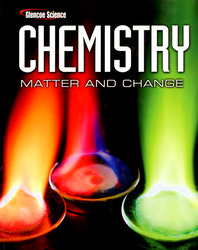1 2+ || Cu2+ |CuA) Cu + Cd2+ → Cd + Cu2+ B) Cu + Cd → Cu2+ + Cd2+ C) Cu2+ + Cd2+ → Cu + Cd D) Cu2+ + Cd → Cu + Cd2+ 2 <a onClick="window.open('/olcweb/cgi/pluginpop.cgi?it=jpg::::/sites/dl/free/007874637x/514816/fig20_1.jpg','popWin', 'width=NaN,height=NaN,resizable,scrollbars');" href="#"><img valign="absmiddle" height="16" width="16" border="0" src="/olcweb/styles/shared/linkicons/image.gif"> (45.0K)</a> A) Copper is not a good conductor. B) There is no salt bridge to move ions. C) There is no potential between zinc and copper. D) There is no load on the wire. 3 <a onClick="window.open('/olcweb/cgi/pluginpop.cgi?it=jpg::::/sites/dl/free/007874637x/514816/fig20_6.jpg','popWin', 'width=NaN,height=NaN,resizable,scrollbars');" href="#"><img valign="absmiddle" height="16" width="16" border="0" src="/olcweb/styles/shared/linkicons/image.gif"> (47.0K)</a> A) +0.420 volts B) -0.420 volts C) +1.104 volts D) -1.104 volts 4 A) Paint acts as a sacrificial anode. B) Paint corrodes leaving steel intact. C) Paint galvanizes steel. D) Paint prevents the oxidation-reduction reaction of corrosion from occurring. 5 A) primary battery B) secondary battery C) fuel cell D) electrolytic cell 6 <a onClick="window.open('/olcweb/cgi/pluginpop.cgi?it=jpg::::/sites/dl/free/007874637x/514816/fig20_8.jpg','popWin', 'width=NaN,height=NaN,resizable,scrollbars');" href="#"><img valign="absmiddle" height="16" width="16" border="0" src="/olcweb/styles/shared/linkicons/image.gif"> (33.0K)</a> A) water vapor B) manganese (IV) oxide C) ammonia gas D) manganese (III) oxide 7 <a onClick="window.open('/olcweb/cgi/pluginpop.cgi?it=jpg::::/sites/dl/free/007874637x/514816/fig20_17.jpg','popWin', 'width=NaN,height=NaN,resizable,scrollbars');" href="#"><img valign="absmiddle" height="16" width="16" border="0" src="/olcweb/styles/shared/linkicons/image.gif"> (48.0K)</a> A) Magnesium is less dense than iron. B) Magnesium is non-magnetic. C) Magnesium oxidizes more easily than iron. D) Magnesium is a better electrical conductor than iron. 8 A) 2Cl- → Cl2 + 2e- B) 2H2 O + 2e- → H2 + 2OH- C) Cl2 + 2e- → 2Cl- D) H2 + 2OH- → 2H2 O + 2e- 9 <a onClick="window.open('/olcweb/cgi/pluginpop.cgi?it=jpg::::/sites/dl/free/007874637x/514816/fig20_21.jpg','popWin', 'width=NaN,height=NaN,resizable,scrollbars');" href="#"><img valign="absmiddle" height="16" width="16" border="0" src="/olcweb/styles/shared/linkicons/image.gif"> (49.0K)</a> A) Chlorine is oxidized, hydrogen is reduced. B) Water is oxidized, sodium is reduced. C) Water is reduced, chlorine and water are oxidized. D) Water is oxidized, chlorine and water are reduced. 10 <a onClick="window.open('/olcweb/cgi/pluginpop.cgi?it=jpg::::/sites/dl/free/007874637x/514816/fig20_22.jpg','popWin', 'width=NaN,height=NaN,resizable,scrollbars');" href="#"><img valign="absmiddle" height="16" width="16" border="0" src="/olcweb/styles/shared/linkicons/image.gif"> (45.0K)</a> A) electricity B) carbon C) electrolyte D) carbon dioxide





